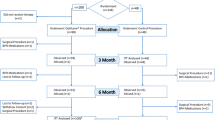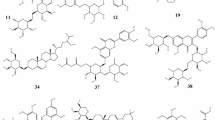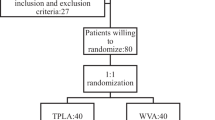Abstract
Saw palmetto extract (SPE), an extract from the ripe berries of the American dwarf palm, has been widely used as a therapeutic remedy for urinary dysfunction due to benign prostatic hyperplasia (BPH) in Europe. Numerous mechanisms of action have been proposed for SPE, including the inhibition of 5α-reductase. Today, α1-adrenoceptor antagonists and muscarinic cholinoceptor antagonists are commonly used in the treatment of men with voiding symptoms secondary to BPH. The improvement of voiding symptoms in patients taking SPE may arise from its binding to pharmacologically relevant receptors in the lower urinary tract, such as α1-adrenoceptors, muscarinic cholinoceptors, 1,4-dihyropyridine receptors and vanilloid receptors. Furthermore, oral administration of SPE has been shown to attenuate the up-regulation of α1-adrenoceptors in the rat prostate induced by testosterone. Thus, SPE at clinically relevant doses may exert a direct effect on the pharmacological receptors in the lower urinary tract, thereby improving urinary dysfunction in patients with BPH and an overactive bladder. SPE does not have interactions with co-administered drugs or serious adverse events in blood biochemical parameters, suggestive of its relative safety, even with long-term intake. Clinical trials (placebo-controlled and active-controlled trials) of SPE conducted in men with BPH were also reviewed. This review should contribute to the understanding of the pharmacological effects of SPE in the treatment of patients with BPH and associated lower urinary tract symptoms (LUTS).
Similar content being viewed by others
Log in or create a free account to read this content
Gain free access to this article, as well as selected content from this journal and more on nature.com
or
References
Roehrborn CG, Rosen RC . Medical therapy options for aging men with benign prostatic hyperplasia: focus on alfusozin 10 mg once daily. Clin Interv Aging 2008; 3: 511–24.
Lepor H, Williford WO, Barry MJ, Brawer MK, Dixon CM, Gormley G, et al. The efficacy of terazosin, finasteride, or both in benign prostatic hyperplasia. Veterans Affairs Cooperative Studies Benign Prostatic Hyperplasia Study Group. N Engl J Med 1996; 335: 533–9.
Ernst E . The risk-benefit profile of commonly used herbal therapies: Ginkgo, St John's Wort, Ginseng, Echinacea, Saw palmetto, and Kava. Ann Intern Med 2002; 136: 42–53.
Wilt TJ, Ishani A, Stark G, MacDonald R, Lau J, Mulrow C . Saw palmetto extracts for treatment of benign prostatic hyperplasia: a systematic review. JAMA 1998; 280: 1604–9.
Lowe FC, Ku JC . Phytotherapy in treatment of benign prostatic hyperplasia: a critical review. Urology 1996; 48: 12–20.
Koch E . Extracts from fruits of saw palmetto (Sabal serrulata) and roots of stinging nettle (Urtica dioica): viable alternatives in the medical treatment of benign prostatic hyperplasia and associated lower urinary tracts symptoms. Planta Med 2001; 67: 489–500.
McNaughton-Collins M, Barry MJ . Managing patients with lower urinary tract symptoms suggestive of benign prostatic hyperplasia. Am J Med 2005; 118: 1331–9.
Bent S, Kane C, Shinohara K, Neuhaus J, Hudes ES, Goldberg H, et al. Saw palmetto for benign prostatic hyperplasia. N Engl J Med 2006; 354: 557–66.
Sultan C, Terraza A, Devillier C, Carilla E, Briley M, Loire C, et al. Inhibition of androgen metabolism and binding by a liposterolic extract of “Serenoa repens B” in human foreskin fibroblasts. J Steroid Biochem 1984; 20: 515–9.
Paubert-Braquet M, Richardson FO, Servent-Saez N, Gordon WC, Monge MC, Bazan NG, et al. Effect of Serenoa repens extract (Permixon) on estradiol/testosterone-induced experimental prostate enlargement in the rat. Pharmacol Res 1996; 34: 171–9.
Carraro JC, Raynaud JP, Koch G, Chisholm GD, Di Silverio F, Teillac P, et al. Comparison of phytotherapy (Permixon) with finasteride in the treatment of benign prostate hyperplasia: a randomized international study of 1 098 patients. Prostate 1996; 29: 231–40; discussion 241–2.
Gerber GS, Zagaja GP, Bales GT, Chodak GW, Contreras BA . Saw palmetto (Serenoa repens) in men with lower urinary tract symptoms: effects on urodynamic parameters and voiding symptoms. Urology 1998; 51: 1003–7.
Goepel M, Hecker U, Krege S, Rubben H, Michel MC . Saw palmetto extracts potently and noncompetitively inhibit human alpha1-adrenoceptors in vitro. Prostate 1999; 38: 208–15.
Oki T, Suzuki M, Nishioka Y, Yasuda A, Umegaki K, Yamada S . Effects of saw palmetto extract on micturition reflex of rats and its autonomic receptor binding activity. J Urol 2005; 173: 1395–9.
Andersson KE . LUTS treatment: future treatment options. Neurourol Urodyn 2007; 26: 934–47.
Debruyne F, Koch G, Boyle P, Da Silva FC, Gillenwater JG, Hamdy FC, et al. Comparison of a phytotherapeutic agent (Permixon) with an alpha-blocker (Tamsulosin) in the treatment of benign prostatic hyperplasia: a 1-year randomized international study. Eur Urol 2002; 41: 497–506; discussion 506–7.
Willetts KE, Clements MS, Champion S, Ehsman S, Eden JA . Serenoa repens extract for benign prostate hyperplasia: a randomized controlled trial. BJU Int 2003; 92: 267–70.
Suzuki M, Oki T, Maruyama S, Takagi Y, Umegaki K, Nishioka Y, et al. Pharmacological effects of Saw Palmetto Extract on urodynamic functions and automic receptors in lower urinary tract of rats. Jpn Neurogenic Bladder Soc 2005; 16: 191–201.
Suzuki M, Oki T, Sugiyama T, Umegaki K, Uchida S, Yamada S . Muscarinic and alpha 1-adrenergic receptor binding characteristics of saw palmetto extract in rat lower urinary tract. Urology 2007; 69: 1216–20.
Habib FK, Wyllie MG . Not all brands are created equal: a comparison of selected components of different brands of Serenoa repens extract. Prostate Cancer Prostatic Dis 2004; 7: 195–200.
Marks LS, Tyler VE . Saw palmetto extract: newest (and oldest) treatment alternative for men with symptomatic benign prostatic hyperplasia. Urology 1999; 53: 457–61.
Levin RM, Das AK . A scientific basis for the therapeutic effects of Pygeum africanum and Serenoa repens. Urol Res 2000; 28: 201–9.
Van Coppenolle F, Le Bourhis X, Carpentier F, Delaby G, Cousse H, Raynaud JP, et al. Pharmacological effects of the lipidosterolic extract of Serenoa repens (Permixon) on rat prostate hyperplasia induced by hyperprolactinemia: comparison with finasteride. Prostate 2000; 43: 49–58.
Steers WD . 5alpha-reductase activity in the prostate. Urology 2001; 58: 17–24; discussion 24.
Delos S, Iehle C, Martin PM, Raynaud JP . Inhibition of the activity of ‘basic’ 5 alpha-reductase (type 1) detected in DU 145 cells and expressed in insect cells. J Steroid Biochem Mol Biol 1994; 48: 347–52.
Di Silverio F, Monti S, Sciarra A, Varasano PA, Martini C, Lanzara S, et al. Effects of long-term treatment with Serenoa repens (Permixon) on the concentrations and regional distribution of androgens and epidermal growth factor in benign prostatic hyperplasia. Prostate 1998; 37: 77–83.
Iehle C, Delos S, Guirou O, Tate R, Raynaud JP, Martin PM . Human prostatic steroid 5 alpha-reductase isoforms — a comparative study of selective inhibitors. J Steroid Biochem Mol Biol 1995; 54: 273–9.
Weisser H, Tunn S, Behnke B, Krieg M . Effects of the sabal serrulata extract IDS 89 and its subfractions on 5 alpha-reductase activity in human benign prostatic hyperplasia. Prostate 1996; 28: 300–6.
Palin MF, Faguy M, LeHoux JG, Pelletier G . Inhibitory effects of Serenoa repens on the kinetic of pig prostatic microsomal 5alpha-reductase activity. Endocrine 1998; 9: 65–9.
Raynaud JP, Cousse H, Martin PM . Inhibition of type 1 and type 2 5alpha-reductase activity by free fatty acids, active ingredients of Permixon. J Steroid Biochem Mol Biol 2002; 82: 233–9.
Carilla E, Briley M, Fauran F, Sultan C, Duvilliers C . Binding of Permixon, a new treatment for prostatic benign hyperplasia, to the cytosolic androgen receptor in the rat prostate. J Steroid Biochem 1984; 20: 521–3.
Mahapokai W, van den Ingh TS, van Mil F, van Garderen E, Schalken JA, Mol JA, et al. Immune response in hormonally-induced prostatic hyperplasia in the dog. Vet Immunol Immunopathol 2001; 78: 297–303.
Steiner G, Gessl A, Kramer G, Schollhammer A, Forster O, Marberger M . Phenotype and function of peripheral and prostatic lymphocytes in patients with benign prostatic hyperplasia. J Urol 1994; 151: 480–4.
Breu W, Hagenlocher M, Redl K, Tittel G, Stadler F, Wagner H . Anti-inflammatory activity of sabal fruit extracts prepared with supercritical carbon dioxide. In vitro antagonists of cyclooxygenase and 5-lipoxygenase metabolism. Arzneimittelforschung 1992; 42: 547–51.
Paubert-Braquet M, Mencia Huerta JM, Cousse H, Braquet P . Effect of the lipidic lipidosterolic extract of Serenoa repens (Permixon) on the ionophore A23187-stimulated production of leukotriene B4 (LTB4) from human polymorphonuclear neutrophils. Prostaglandins Leukot Essent Fatty Acids 1997; 57: 299–304.
Vela Navarrete R, Garcia Cardoso JV, Barat A, Manzarbeitia F, Lopez Farre A . BPH and inflammation: pharmacological effects of Permixon on histological and molecular inflammatory markers. Results of a double blind pilot clinical assay. Eur Urol 2003; 44: 549–55.
Kyprianou N, Tu H, Jacobs SC . Apoptotic versus proliferative activities in human benign prostatic hyperplasia. Hum Pathol 1996; 27: 668–75.
Cardillo M, Berchem G, Tarkington MA, Krajewski S, Krajewski M, Reed JC, et al. Resistance to apoptosis and up regulation of Bcl-2 in benign prostatic hyperplasia after androgen deprivation. J Urol 1997; 158: 212–6.
Colombel M, Vacherot F, Diez SG, Fontaine E, Buttyan R, Chopin D . Zonal variation of apoptosis and proliferation in the normal prostate and in benign prostatic hyperplasia. Br J Urol 1998; 82: 380–5.
Vacherot F, Azzouz M, Gil-Diez-De-Medina S, Colombel M, De La Taille A, Lefrere Belda MA, et al. Induction of apoptosis and inhibition of cell proliferation by the lipido-sterolic extract of Serenoa repens (LSESr, Permixon®) in benign prostatic hyperplasia. Prostate 2000; 45: 259–66.
Claus S, Berges R, Senge T, Schulze H . Cell kinetic in epithelium and stroma of benign prostatic hyperplasia. J Urol 1997; 158: 217–21.
Vacher P, Prevarskaya N, Skryma R, Audy MC, Vacher AM, Odessa MF, et al. The lipidosterolic extract from serenoa repens interferes with prolactin receptor signal transduction. J Biomed Sci 1995; 2: 357–65.
Koch E . Pharmakologie und Wirkmechanismus von Extrakten aus Sabalfrüchten (Sabal fructus), Brennesselwurzeln (Urtica radix) und Kürbissamen (Cucurbitae peponis semen) bei der Behandlung der benignen Prostatahyperplasie. Phytopharmaka in Forschung und klinischer Anwendung 1995.
Birder LA, Kanai AJ, de Groat WC, Kiss S, Nealen ML, Burke NE, et al. Vanilloid receptor expression suggests a sensory role for urinary bladder epithelial cells. Proc Natl Acad Sci USA 2001; 98: 13396–401.
Apostolidis A, Brady CM, Yiangou Y, Davis J, Fowler CJ, Anand P . Capsaicin receptor TRPV1 in urothelium of neurogenic human bladders and effect of intravesical resiniferatoxin. Urology 2005; 65: 400–5.
Ito Y, Kageyama A, Iwasaki Y, Watanabe T, Yamada S . Effects of propiverine and oxybutynin to treat overactive bladder, on vanilloid receptor (transient receptor potential vanilloid subtype 1: TRPV1). Jpn Neurogenic Bladder Soc, in press.
Plosker GL, Brogden RN . Serenoa repens (Permixon). A review of its pharmacology and therapeutic efficacy in benign prostatic hyperplasia. Drugs Aging 1996; 9: 379–95.
Chevalier G, Benard P, Cousse H, Bengone T . Distribution study of radioactivity in rats after oral administration of the lipido/sterolic extract of Serenoa repens (Permixon) supplemented with [1-14C]-lauric acid, [1-14C]-oleic acid or [4-14C]-beta-sitosterol. Eur J Drug Metab Pharmacokinet 1997; 22: 73–83.
Rhodes L, Primka RL, Berman C, Vergult G, Gabriel M, Pierre-Malice M, et al. Comparison of finasteride (Proscar), a 5 alpha reductase inhibitor, and various commercial plant extracts in in vitro and in vivo 5 alpha reductase inhibition. Prostate 1993; 22: 43–51.
Izzo AA, Ernst E . Interactions between herbal medicines and prescribed drugs: a systematic review. Drugs 2001; 61: 2163–75.
Williamson EM . Synergy and other interactions in phytomedicines. Phytomedicine 2001; 8: 401–9.
Sugiyama T, Kubota Y, Shinozuka K, Yamada S, Wu J, Umegaki K . Ginkgo biloba extract modifies hypoglycemic action of tolbutamide via hepatic cytochrome P450 mediated mechanism in aged rats. Life Sci 2004; 75: 1113–22.
Uchida S, Yamada H, Li XD, Maruyama S, Ohmori Y, Oki T, et al. Effects of Ginkgo biloba extract on pharmacokinetics and pharmacodynamics of tolbutamide and midazolam in healthy volunteers. J Clin Pharmacol 2006; 46: 1290–8.
Markowitz JS, Donovan JL, Devane CL, Taylor RM, Ruan Y, Wang JS, et al. Multiple doses of saw palmetto (Serenoa repens) did not alter cytochrome P450 2D6 and 3A4 activity in normal volunteers. Clin Pharmacol Ther 2003; 74: 536–42.
Boyle P, Robertson C, Lowe F, Roehrborn C . Meta-analysis of clinical trials of permixon in the treatment of symptomatic benign prostatic hyperplasia. Urology 2000; 55: 533–9.
Boyle P, Robertson C, Lowe F, Roehrborn C . Updated meta-analysis of clinical trials of Serenoa repens extract in the treatment of symptomatic benign prostatic hyperplasia. BJU Int 2004; 93: 751–6.
Gerber GS, Fitzpatrick JM . The role of a lipido-sterolic extract of Serenoa repens in the management of lower urinary tract symptoms associated with benign prostatic hyperplasia. BJU Int 2004; 94: 338–44.
Gerber GS, Kuznetsov D, Johnson BC, Burstein JD . Randomized, double-blind, placebo-controlled trial of saw palmetto in men with lower urinary tract symptoms. Urology 2001; 58: 960–4; discussion 964–5.
Marks LS, Partin AW, Epstein JI, Tyler VE, Simon I, Macairan ML, et al. Effects of a saw palmetto herbal blend in men with symptomatic benign prostatic hyperplasia. J Urol 2000; 163: 1451–6.
Descotes JL, Rambeaud JJ, Deschaseauz P, Faure G . Placebo-controlled evaluation of the efficacy and tolerability of Permixon in benign prostatic hyperplasia after exclusion of placebo responders. Clin Drug Investig 1995; 9: 291–7.
Reece SH, Memon A, Smart CJ, Dewbury K . The value of permixon in benign prostatic hypertrophy. Br J Urol 1986; 58: 36–40.
Cukier J, Ducasso J, Le Guillou M, Leriche A, Lobel B, Toubol J . Permixon versus placebo: resultats d'une ‘etude multicentrique. CR Ther Pharmacol Clin 1985; 4: 15–21.
Tasca A, Barulli M, Cavazzana A, Zattoni F, Artibani W, Pagano F . Treatment of obstructive symptomatology caused by prostatic adenoma with an extract of Serenoa repens. Double-blind clinical study vs placebo. Minerva Urol Nefrol 1985; 37: 87–91.
Champault G, Patel JC, Bonnard AM . A double-blind trial of an extract of the plant Serenoa repens in benign prostatic hyperplasia. Br J Clin Pharmacol 1984; 18: 461–2.
Boccafoschi C, Annoscia S . Comparison of Serenoa repens extract with placebo by controlled clinical trial in patients with prostatic adenomatosis. Urologia 1983; 50: 1257–68.
Emili E, Cingo M, Petrone U . Risulti clinici su un nueovo farmaco nella terapia dell-ipertrofia della prostate (Permixon®). Urologia 1983; 50: 1042–9.
Grasso M, Montesano A, Buonaguidi A, Castelli M, Lania C, Rigatti P, et al. Comparative effects of alfuzosin versus Serenoa repens in the treatment of symptomatic benign prostatic hyperplasia. Arch Esp Urol 1995; 48: 97–103.
Adriazola Semino M, Lozano Ortega JL, Garcia Cobo E, Tejeda Banez E, Romero Rodriguez F . Symptomatic treatment of benign hypertrophy of the prostate. Comparative study of prazosin and serenoa repens. Arch Esp Urol 1992; 45: 211–3.
Debruyne F, Boyle P, Calais Da Silva F, Gillenwater JG, Hamdy FC, Perrin P, et al. Evaluation of the clinical benefit of permixon and tamsulosin in severe BPH patients-PERMAL study subset analysis. Eur Urol 2004; 45: 773–9.
Jibrin I, Erinle A, Saidi A, Aliyu ZY . Saw palmetto-induced pancreatitis. South Med J 2006; 99: 611–2.
Gurley BJ, Gardner SF, Hubbard MA, Williams DK, Gentry WB, Carrier J, et al. In vivo assessment of botanical supplementation on human cytochrome P450 phenotypes: Citrus aurantium, Echinacea purpurea, milk thistle, and saw palmetto. Clin Pharmacol Ther 2004; 76: 428–40.
Yale SH, Glurich I . Analysis of the inhibitory potential of Ginkgo biloba, Echinacea purpurea, and Serenoa repens on the metabolic activity of cytochrome P450 3A4, 2D6, and 2C9. J Altern Complement Med 2005; 11: 433–9.
Author information
Authors and Affiliations
Corresponding author
Rights and permissions
About this article
Cite this article
Suzuki, M., Ito, Y., Fujino, T. et al. Pharmacological effects of saw palmetto extract in the lower urinary tract. Acta Pharmacol Sin 30, 271–281 (2009). https://doi.org/10.1038/aps.2009.1
Received:
Accepted:
Published:
Issue date:
DOI: https://doi.org/10.1038/aps.2009.1
Keywords
This article is cited by
-
Antioxidant-polyphenols of saw palmetto seeds: statistical optimized production and improved functional properties under solid-state fermentation by Trichoderma reesei
Journal of Food Measurement and Characterization (2023)
-
A double blind, placebo-controlled randomized comparative study on the efficacy of phytosterol-enriched and conventional saw palmetto oil in mitigating benign prostate hyperplasia and androgen deficiency
BMC Urology (2020)
-
A phytosterol-enriched saw palmetto supercritical CO2 extract ameliorates testosterone-induced benign prostatic hyperplasia by regulating the inflammatory and apoptotic proteins in a rat model
BMC Complementary and Alternative Medicine (2019)
-
Use of saw palmetto (Serenoa repens) extract for benign prostatic hyperplasia
Food Science and Biotechnology (2019)
-
Effects of different natural extracts in an experimental model of benign prostatic hyperplasia (BPH)
Inflammation Research (2018)



